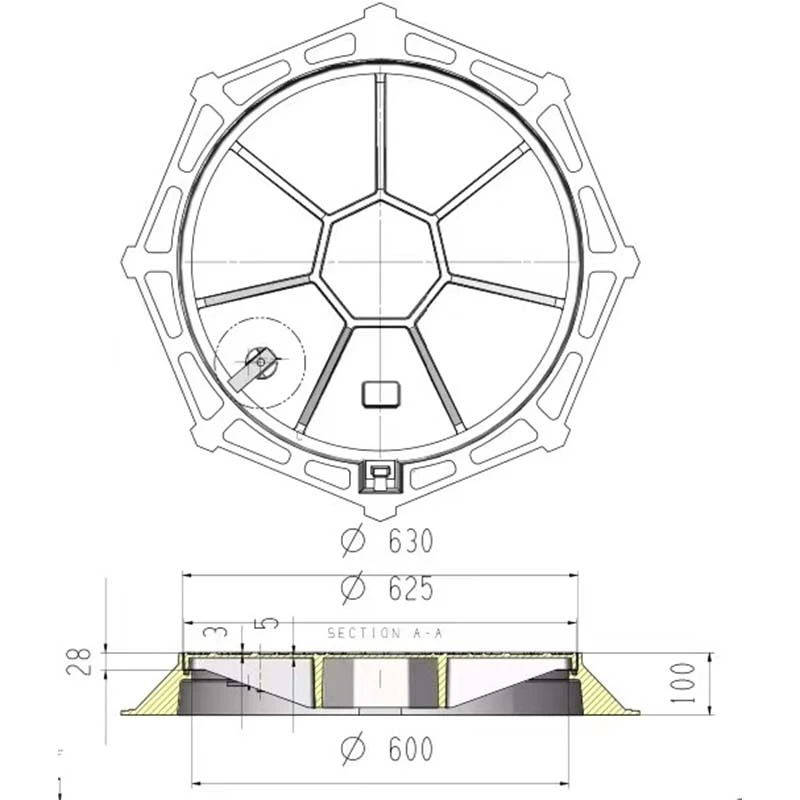Standards for Ductile Iron Pipes and Fittings for Water Supply and Sewage Applications
Understanding ISO 2531 and EN 545 Standards for Ductile Iron Pipes
Ductile iron pipes have become a prevalent choice in the water and wastewater sectors due to their remarkable strength, durability, and resistance to corrosion. To ensure that these pipes meet necessary safety and performance requirements, various international standards have been established. Among these, ISO 2531 and EN 545 are critical frameworks that govern the specifications for ductile iron pipes used in water supply networks.
ISO 2531 A Comprehensive Overview
ISO 2531 is an international standard that outlines the specifications for ductile iron pipes, specifically for water supply and sewage. It was developed by the International Organization for Standardization (ISO), and it emphasizes the performance requirements, manufacturing processes, and quality control measures necessary to ensure the reliability and durability of ductile iron pipes.
One of the critical aspects of ISO 2531 is its focus on the mechanical properties of the material. The standard specifies minimum requirements for yield strength, elongation, and other mechanical properties that the ductile iron must possess. This focus ensures that the pipes can withstand the pressures and stresses encountered in extensive water distribution systems.
Additionally, ISO 2531 outlines guidelines for the coatings and linings of pipes, which are crucial for preventing corrosion and enhancing the longevity of the pipe installations. The standard recommends the use of protective coatings that can withstand harsh environmental conditions.
EN 545 The European Perspective
EN 545 is the European standard for ductile iron pipes and fittings for water supply, published by the European Committee for Standardization (CEN). This standard aligns closely with ISO 2531 but includes some specific regional considerations that address the diverse environments found across Europe.
iso2531/en545

EN 545 specifies the requirements for the design, manufacturing, testing, and quality assurance processes for ductile iron pipes. Like ISO 2531, it emphasizes the mechanical strength of the material; however, it also incorporates requirements for the environmental considerations common in European countries, such as regulations regarding drinking water safety and sustainability.
One unique aspect of EN 545 is its focus on the compatibility of ductile iron pipes with various fittings and joints. The standard provides guidelines on how these components should interact to establish a reliable and leak-proof system. This ensures that when ductile iron pipes are installed, they operate efficiently and without risk of failure at the joints, which can be common points of weakness.
The Importance of Standards in Water Infrastructure
The implementation of standards such as ISO 2531 and EN 545 is vital for maintaining high-quality water infrastructure. These standards provide manufacturers with clear specifications, which helps in producing reliable products that meet the demands of modern water supply systems. They also give engineers and project managers confidence in the materials they select for construction projects, ensuring compliance with safety regulations and performance expectations.
Moreover, adherence to these standards aids in international trade of ductile iron pipes, allowing for a global market where materials can be utilized across different countries while ensuring a consistent level of quality.
Conclusion
In conclusion, ISO 2531 and EN 545 play pivotal roles in the regulation of ductile iron pipes used in water and sewage systems. By laying down the requirements for material strength, protective coatings, and the compatibility of fittings, these standards help ensure the safety and efficiency of water delivery infrastructure. As the demand for robust and sustainable water supply solutions continues to grow, adherence to these standards will remain essential for manufacturers, engineers, and policymakers alike.
-
The Essential Component for Safe Urban InfrastructureNewsMay.14,2025
-
The Backbone of Urban InfrastructureNewsMay.14,2025
-
Practical and Stylish Solutions for Your Drainage NeedsNewsMay.14,2025
-
Lamphole Frame and Cover: Essential for Urban InfrastructureNewsMay.14,2025
-
A Seamless and Aesthetic SolutionNewsMay.14,2025
-
A Must-Have for Safety and DurabilityNewsMay.14,2025
-
Pipe Repair Clamps: Your Ultimate Solution for Efficient RepairsNewsMay.09,2025
